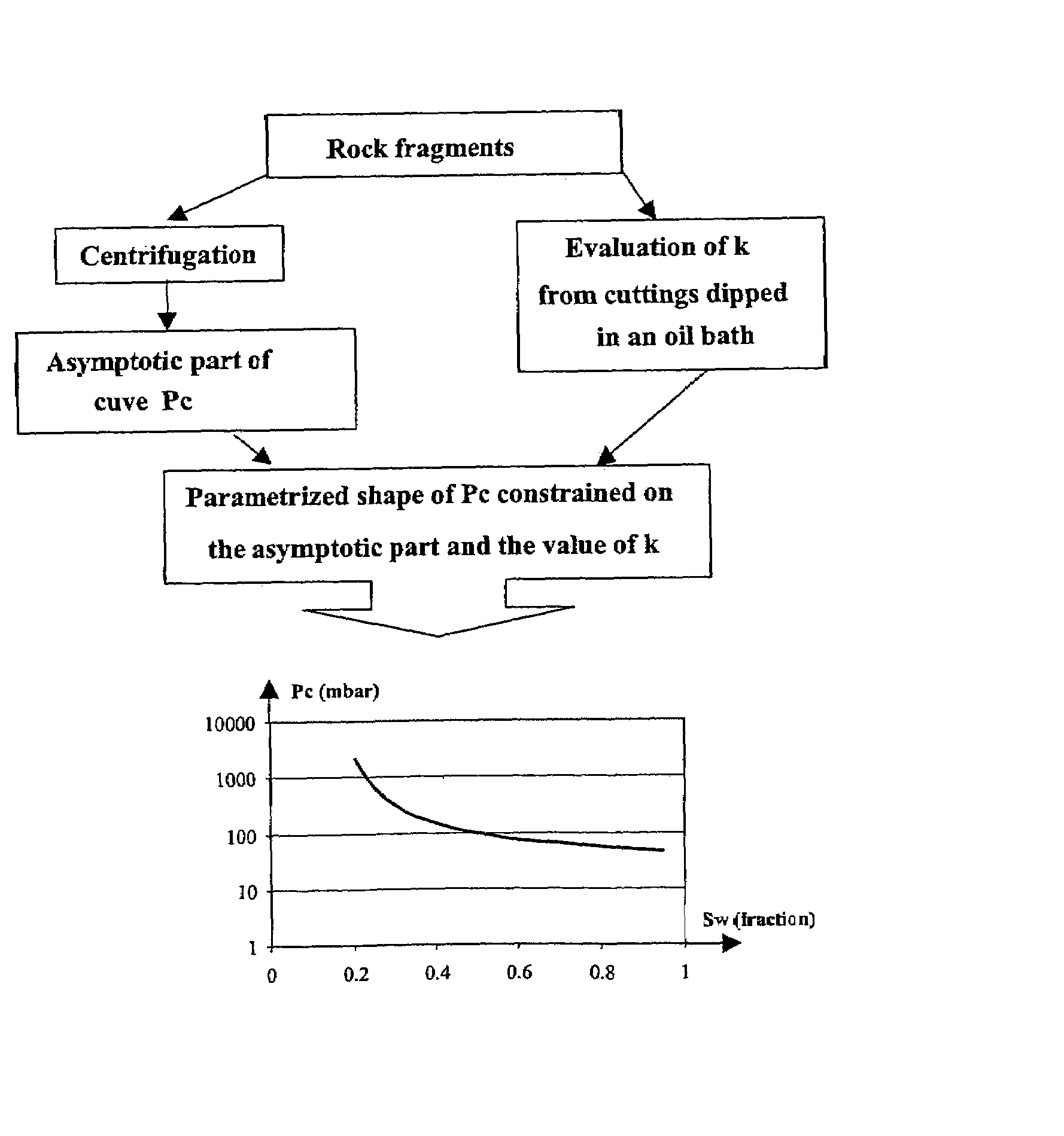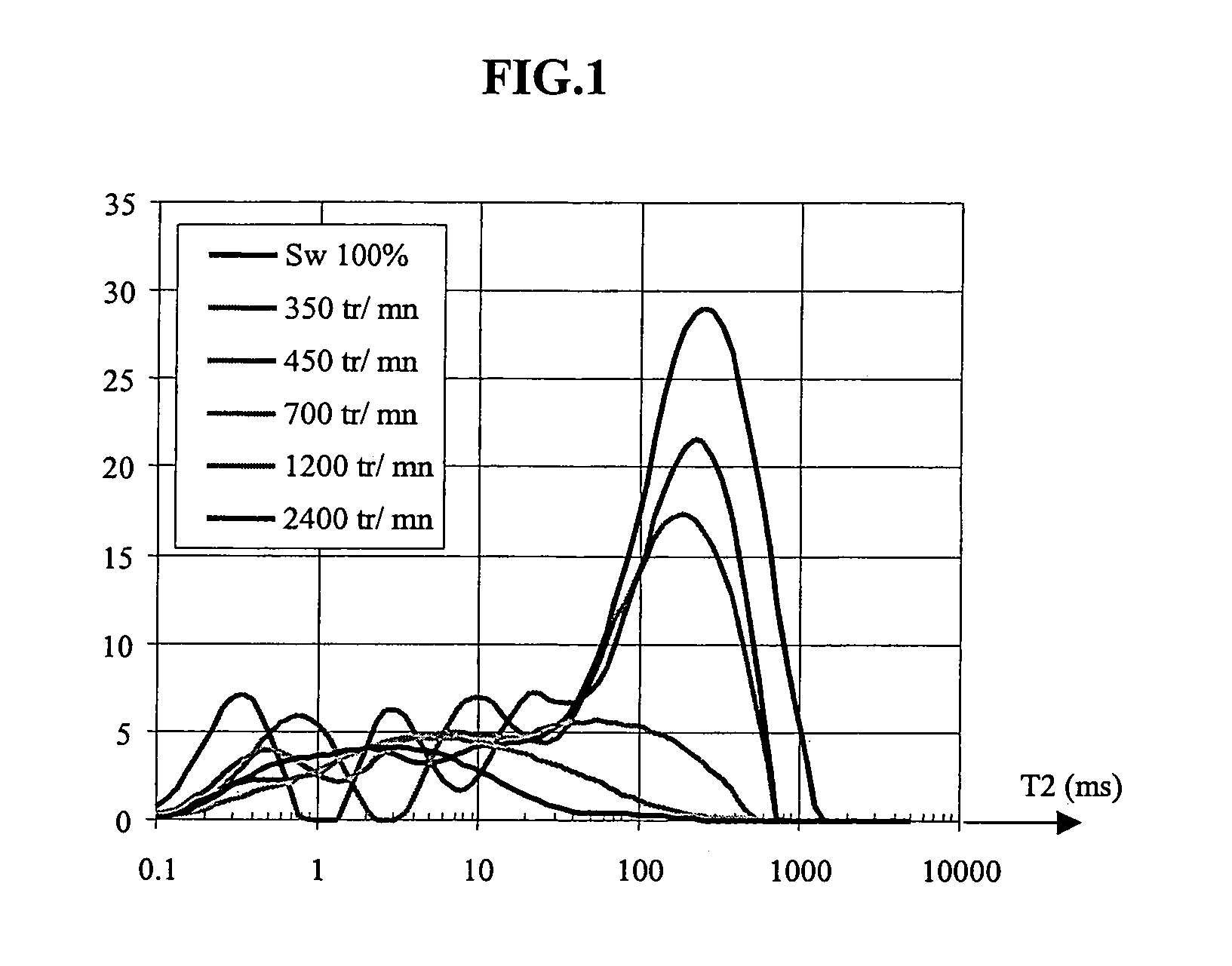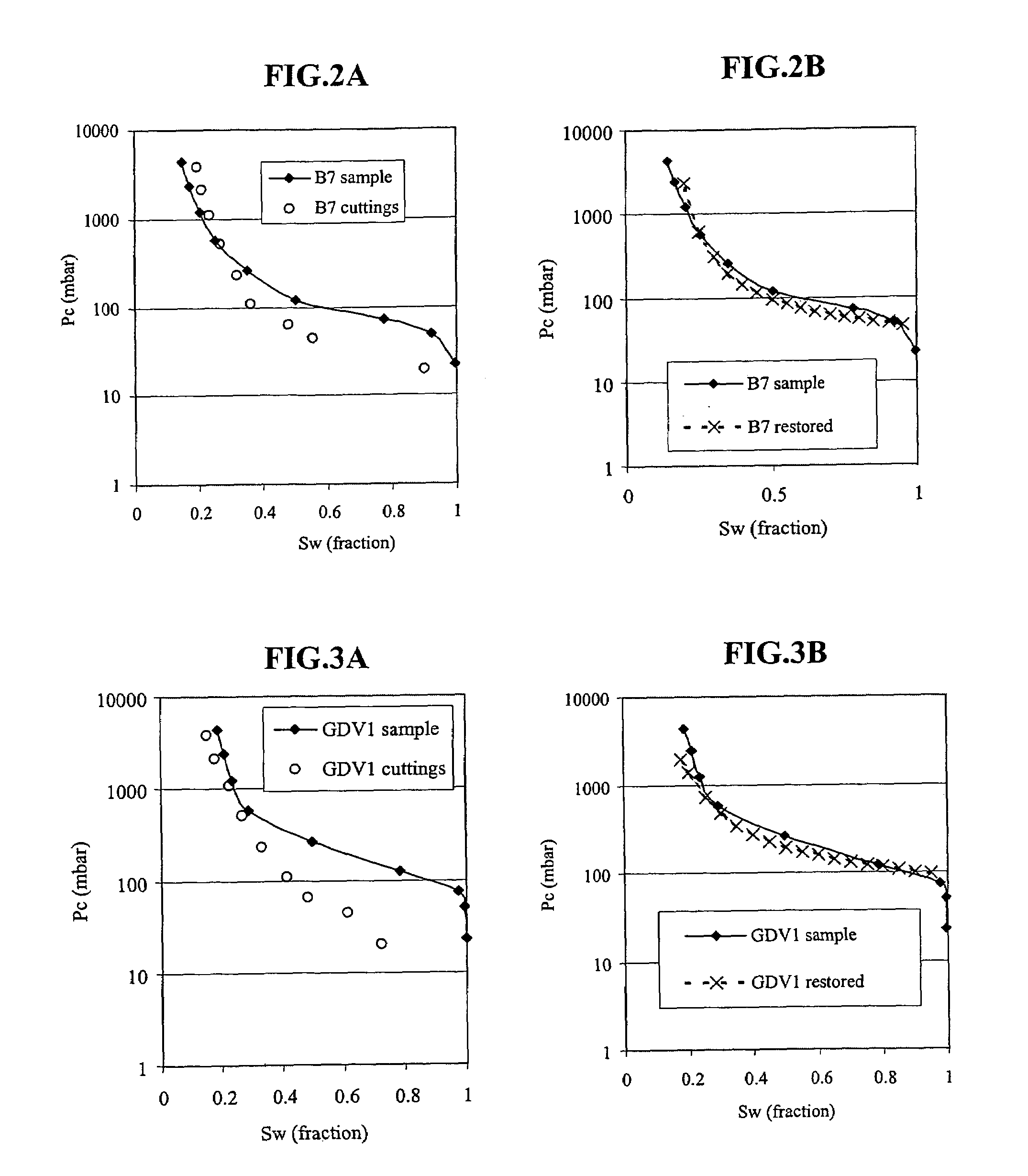Method of evaluating the capillary pressure curve of an underground deposit rocks based on rock cuttings measurements
a technology of capillary pressure curve and underground reservoir, which is applied in seismology for waterlogging, instruments, borehole/well accessories, etc., can solve the problems of not being recommended in a predictive exploration context, the curve obtained is significantly different from the reference curve obtained from the core, and the method is expensive. , to achieve the effect of being convenient to obtain and being less expensiv
- Summary
- Abstract
- Description
- Claims
- Application Information
AI Technical Summary
Benefits of technology
Problems solved by technology
Method used
Image
Examples
Embodiment Construction
[0041]The method intended for fast evaluation of a capillary pressure curve Pc from rock fragments or cuttings according to the invention is illustrated by FIG. 7. The method is based on two experimental measuring stages, followed by a parametrizing stage by reference with known curves, to reconstruct curve Pc over the total saturation range. During one of the measuring stages, capillary pressure data Pc are acquired by centrifuging the initially water-saturated rock fragments. The other experimental stage allows calculation of the permeability value k of the rock from the method described in the aforementioned French patent application 02 / 0023. Reconstruction of curve Pc over the total saturation range is carried out by using a parametrized form. The parameters of the curve are determined in such a way that the curve matches the capillary pressure data Pc obtained experimentally and the estimated permeability value from the curve Pc obtained according to a known method such as Thom...
PUM
| Property | Measurement | Unit |
|---|---|---|
| size | aaaaa | aaaaa |
| capillary pressure curve | aaaaa | aaaaa |
| permeability | aaaaa | aaaaa |
Abstract
Description
Claims
Application Information
 Login to View More
Login to View More - R&D
- Intellectual Property
- Life Sciences
- Materials
- Tech Scout
- Unparalleled Data Quality
- Higher Quality Content
- 60% Fewer Hallucinations
Browse by: Latest US Patents, China's latest patents, Technical Efficacy Thesaurus, Application Domain, Technology Topic, Popular Technical Reports.
© 2025 PatSnap. All rights reserved.Legal|Privacy policy|Modern Slavery Act Transparency Statement|Sitemap|About US| Contact US: help@patsnap.com



